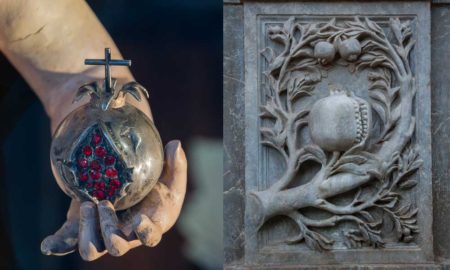- Evaluation of Genetic Diversity of Proso Millet Germplasm Available in the United States using Simple-Sequence Repeat Markers. Germplasm collection diverse, released cultivars not so much.
- Genetic Diversification and Dispersal of Taro (Colocasia esculenta (L.) Schott). Most diverse in India, which is origin of W. African material, in contrast to the S. African, which comes from Japan. The Caribbean stuff comes from the Pacific, but the Central American from India.
- The genetic structure of the world’s first farmers. Ancient DNA suggests agriculture arose separately in southern Levant and Iran. Or at least that the first farmers in those regions didn’t speak together much.
- Current warming will reduce yields unless maize breeding and seed systems adapt immediately. Crop duration in Africa will decrease faster than you can breed for it.
- Uncertainty in soil data can outweigh climate impact signals in global crop yield simulations. And then there’s the whole soil thing.
- Evolutionary genomics of peach and almond domestication. Separated a long time ago, and fruit diverged before domestication, which occurred separately but in parallel.
- Phenotypic evaluation and genetic dissection of resistance to Phytophthora sojae in the Chinese soybean mini core collection. Some new genes found, and geographic hotspots of resistance too.
Nibbles: Bush tucker, Amazonian tea, Bolivian genebank, Global diets, Heirloom wheat, Clam gardens
- Aussie native vegetables on the menu. No Latin names, but Rhizowen Radix tell me: youlk = Platysace deflexa; kulyu = Ipomoea calobra.
- Another non-scientifically named plant is set to save the Amazon. Turns out it’s Ilex guayusa. Probably.
- World Bank to build genebank in Bolivia.
- World Coffee Research puts out nice variety catalogue.
- Our paper of a couple of years ago on globalized diets makes it to Scientific American and gets mashed up with the latest one.
- Purple patch for Purple Straw?
- Yes, you can garden clams.
Brainfood: Maize domestication, Eastern European grazing, Silk Road, Hybridization, European agroforestry, Japanese pears
- Recent demography drives changes in linked selection across the maize genome. Only a small part of teosinte contributed to maize.
- Changing year-round habitat use of extensively grazing cattle, sheep and pigs in East-Central Europe between 1940 and 2014: Consequences for conservation and policy. Animals don’t graze as much, or the same habitats, as they used to, which may not be altogether good for conservation of either plants or livestock because grazing was an important management intervention for thousands of years.
- Between China and South Asia: A Middle Asian corridor of crop dispersal and agricultural innovation in the Bronze Age. Wheat goes east, millets go west.
- Hybridization and extinction. Genetic swamping can happen, but hybridization can rescue a species too.
- Do European agroforestry systems enhance biodiversity and ecosystem services? A meta-analysis. Yes.
- Estimation of loss of genetic diversity in modern Japanese cultivars by comparison of diverse genetic resources in Asian pear (Pyrus spp.). The modern cultivars are variations on “Nijisseiki.”
Pomegranate symbolism through the ages
Those of you that remember us agonizing about the minutae of agrobiodiversity iconography, to the extent of wondering if this
was indeed what it seemed to be, will rejoice with us that, with regards to pomegranates at least, we seem to have found the motherlode.

LATER: And then some.
LATER STILL: And then some more.
Nibbles: Agroecology, Seaweed, Groundnut genomes, Roman food, Nature
- It’s not the science, stupid.
- More kelp, sir?
- New genome promises
world dominationnon-allergenic peanut. - The diet of Roman soldiers in Glasgow could have been worse. But did they have take-out?
- There is no more Nature, capital N.